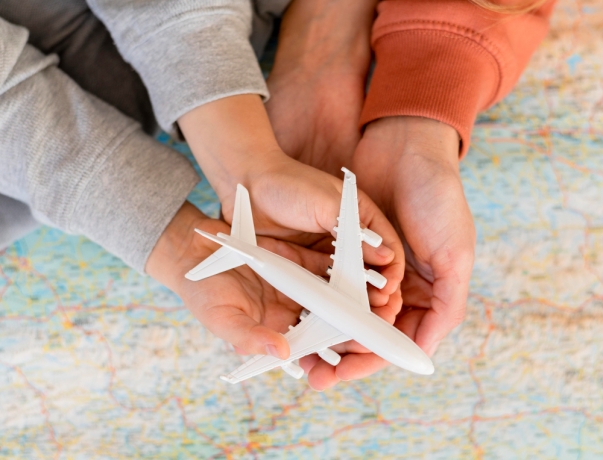The thought of a private jet rental in Dubai typically conjures images of captain’s chairs that can lay fully flat, a bottle of Champagne chilling in an ice bucket on the side, a full-course meal served on proper plates, and the freedom to do whatever you want. Long-haul flights may even have a full-sized bed and shower for home-like comfort.
However, when you look beyond the extravagance of private jet flights, you will realize that private jets often serve less glamorous but far more critical roles. One of these is transporting humanitarian aid cargo and personnel.
Private jet charters are suitable for humanitarian aid, relief, and rescue missions. They’re crucial to delivering food packs, warm blankets, beds, medicines, amenity kits, and other relief goods to countries or cities ravaged by typhoons, earthquakes, volcanic eruptions, floods, and wars. Likewise, private jets are useful for ferrying doctors, nurses, first responders, and medically distressed individuals during rescue and medical missions.
All the conveniences offered by private jets – with the exception of onboard amenities – are necessary to aid missions effectively. In particular, the ability to depart and land at smaller airports, the lack of passenger queues, and the shorter waiting times for boarding and disembarking are all significant advantages when you are on a mission to save lives.
Below are specific use cases of private jet charters in humanitarian rescue and relief operations.
1. Responding Rapidly to Crisis Situations
The United Nations OCHA (Office for the Coordination of Humanitarian Affairs) says rescue and relief operations must commence within the first 72 hours of a disaster for maximum life-saving impact.
Private jets allow governments and humanitarian aid organizations to move and respond rapidly to a crisis. After a calamity strikes, organizations can load private planes with first responders and life-saving supplies and get life-saving help to distressed areas within a few hours.
2. Preparing for Calamities
It’s true that governments and humanitarian aid organizations must prepare everything before disaster strikes to act within the 72-hour disaster-response window. For instance, if a destructive super-typhoon is expected to make landfall, organizations in charge of relief and rescue missions must have made arrangements weeks or days before.
Evacuation centers should be designated, and people should be informed about evacuation standard operating procedures (SOPs). SOPs must be relayed to key onsite offices and personnel. Aid and relief packages must also be sent ahead and stored in safe locations in the area or just outside of the area the typhoon will ravage.
Even during these preparatory missions, private jets — with their rapid deployment capabilities — make a significant difference. When every minute counts, you want a plane you can fly at command.
3. Accessing Hard-to-Reach Areas
In disaster-stricken or conflict areas, infrastructure damage often makes it difficult for traditional aid delivery methods to operate efficiently. Commercial flights, in particular, usually cannot land in damaged airports.
Private jets can reach remote or damaged airstrips that commercial aircraft cannot, making them invaluable in delivering aid to those in inaccessible areas. They can also land in minor airports, so they can still transport cargo and personnel as close as possible to the target destination, even if they cannot land in a major airport due to severe infrastructure damage.
4. Transporting Specialized Aid and Medical Equipment
Private jets can deliver specialized satellite equipment, medication, medical consumables, and medical equipment urgently needed in crisis zones. The satellite equipment can be for:
- Communications: to connect people on the ground to base or control
- Mapping: to provide responders with real-time updates on ground conditions
- Risk assessment: to identify and mitigate threats
Medicines usually include:
- Antibiotics
- Analgesics
- Antipyretics
- Oral rehydration salts
- Insulin
- Blood pressure medication
- Asthma inhalers
In certain places, anti-malarial medicines and vaccines may also be necessary. Medical supplies can include:
- Syringes
- Needles
- Cannulas
- Bandages
- Gauze
- PPEs
- Masks
- Gloves
- Disinfectants
Medical equipment can include:
- Portable x-ray machines
- Portable ultrasound machines
- Glucometers
- Blood pressure monitors
- Ventilators
- Oxygen concentrators
- Surgical instruments
5. Evacuation of Vulnerable Individuals
Private jets do not only deliver supplies and equipment but also transport relief and rescue personnel to distressed areas. They can also be used to evacuate vulnerable individuals. These include patients whose lives are in danger if they do not receive advanced medical care, children who must be removed from a war zone, or citizens stranded in crisis-hit regions.
6. Customizing Aid Missions
Private jets can be customized according to the specific needs of the mission, for instance, carrying cold-chain products, bulky cargo, or a large number of evacuees. This adaptability makes them an invaluable asset in complex humanitarian operations.
Private Jets: Delivering Aid Where Needed
Private jets are a fantastic way to travel. Traveling on a private charter to India is definitely better than flying on a commercial airliner.
However, private jets are not all glamor. They are vital to humanitarian aid efforts, offering rapid response, accessibility, and flexibility, which are crucial in rescue and relief operations. Their ability to quickly transport aid and personnel and evacuate vulnerable individuals makes them indispensable in global humanitarian efforts.






